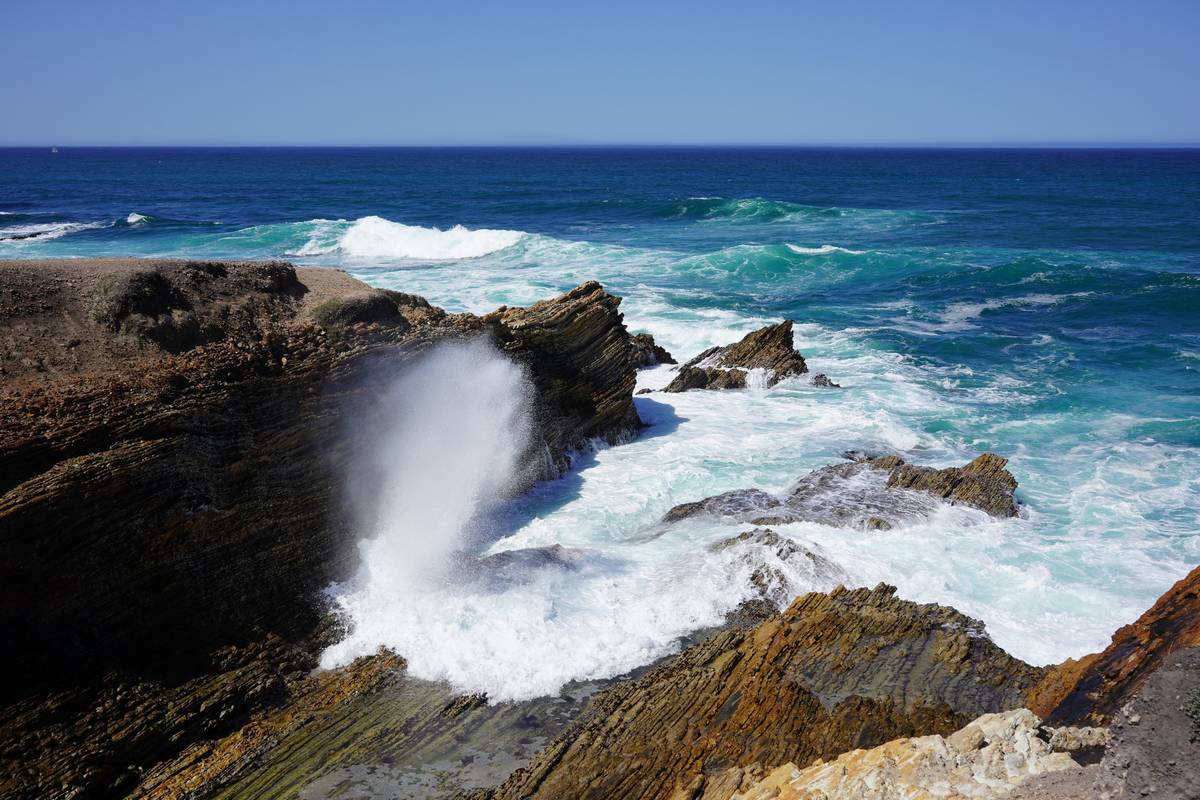Relaxing, gorgeous getaway awaits in Cambria on California’s coast

San Diego and Santa Monica are welcome beach escapes during the blistering Las Vegas summer, but vacationers need to steel themselves for the crowds, traffic congestion and stress that often accompany Southern California fun. A quaint, quieter alternative is the seaside village of Cambria on the central coast.
Barefoot walks in the Pacific surf and cozy accommodations at one of the inns along Moonstone Beach are a seven-hour drive from Las Vegas. Comfort and calm wait at the end of a long route crossing the Mojave Desert, meandering through Bakersfield and winding through a hilly landscape and eventually to the coast.
Cambria was my family’s base camp during spring break this year. There were plenty of diversions within minutes of our Moonstone Beach hotel room, but we also embraced opportunities to venture out and paddle kayaks through calm Morro Bay waters, drive along cliff-clinging Highway 1’s southern stretch of Big Sur, hike Montana de Oro’s bluffs and visit an elephant seal rookery near Hearst Castle.
After each day of exploration, we’d return to Cambria for dinner and a sunset stroll on the town’s Moonstone Beach boardwalk. Leffingwell Landing is a popular spot for sunset watchers, but views of the rocky cliffs, beaches and boundless Pacific Ocean are spectacular from every point on Cambria’s boardwalk. Along the way, there are several access points to reach the beach and splash in the surf or look for namesake moonstones or snoop around for sea stars, crabs and sea anemones in tidal pools.
Kayaking, hiking and more
The morning after arriving in Cambria, we headed south for a marathon Morro Bay day. We arrived at A Kayak Shack at Morro Bay State Park Marina shortly after it opened at 9 a.m. for first-come, first-served rentals (single kayaks were $24 for two hours). Time spent in the bay’s waters meant watching curious harbor seals swim near our kayaks and spotting a sea otter floating along and using its chest as a plate while feasting on a freshly grabbed crab. It meant watching a veil of mist lift to reveal the area’s famous ancient 580-foot-tall volcanic mound. Being on the water for two hours gave us a closer connection to this pristine place.
After returning our kayaks, we enjoyed lunch goods from a French bakery and small grocery in Cambria. Next on our to-do list was the nearby Marina Peninsula Trail for close-up views of the estuary, a nutrient-rich environment of fresh and salt water that rises and falls with the tides. We spotted egrets feeding in the mudflats and, in late March, hundreds of migrating shorebirds.
Next up was Morro Coast Audubon Society’s Sweet Springs Nature Preserve. The entrance’s display garden of native plants, including hummingbird sage, is a welcoming sight for visitors. After walking under a canopy of eucalyptus trees, we enjoyed our third vantage point of Morro Bay and its daily rhythms. In the distance, Forster’s terns dove at high speeds for fish. A few noteworthy birds that day included a crescent moon-cheeked male blue-winged teal, Nuttall’s woodpecker, chestnut-backed chickadees, oak titmice and a Townsend’s warbler.
Before returning to Cambria for the night, we stopped off at Morro Bay’s bustling Embarcadero and followed the crowds out to Morro Rock State Park to walk next to the volcanic mound that has a history of helping mariners navigate. Some of our best looks at sea otters were in the waters near Morro Rock, which is home to nesting peregrine falcons.
On the return trip to Cambria along Highway 1, signs told of several state parks with coastal access, and one sign advertised the Brown Butter Cookie Company. We took note. There were too many beaches to return to, but there was only one Brown Butter Cookie Company. The next day we would stop in Cayucos en route to Montana de Oro State Park, where scrumptious cookies would complement sweeping Pacific Coast views along the 4-mile Bluff Trail.
Whales and other creatures
Thousands of brilliant orange California poppies were blooming there in late March, and we spotted two alligator lizards and a rattlesnake along the Bluff Trail. We heard what sounded like laughter from black oystercatchers flying around the surf-battered rocks below, and we spotted the first whales of the trip from our Bluff Trail perch. Glimpses through binoculars at fins, tails and backs gave us the impression we were looking at humpback whales. From a distance, columns of moist air could be seen rising high above the water. This spouting is a result of air being forced out blowholes when whales surface to breathe.
Our whale-spotting luck continued as we drove north of Cambria the next day and made a dozen stops along Highway 1 through the southern stretch of Big Sur. We drove about 30 miles of the stunning and twisted mountainous road before turning around and heading back south. The going was purposefully slow, so we could appreciate the wildflowers, road trip bucket list scenery and sheer drop-offs.
Before returning to Cambria, there were a couple of critters we still needed to see: zebras and elephant seals. Shortly after we passed the turn-off to Hearst Castle Visitor Center, we spotted from Highway 1 a dozen of the more than 100 zebras living wildly on lands where their imported ancestors had been freed 80 years ago.
As we continued south, the sight of the Piedras Blancas lighthouse from Highway 1 signaled that we were getting close to a parking area and viewing platform that allows visitors to see and hear hundreds of elephant seals lounging, flipping sand, grunting and yelping on an off-limits beach rookery just north of our quaint and quiet base camp. After spending a half-hour in the company of elephant seals, there was dinner and a final sunset to catch in Cambria.